15 facts about Namibia – What you want to know about Namibia!
During my long trip around Namibia, I listed these 15 interesting facts about Namibia for you! Because if you’re planning a trip to Namibia, there are of course a number of highlights you absolutely must visit. But knowing a bit more about the background of these highlights is also nice, so I describe them in more detail. I chose these 15 facts about Namibia, which already include a number of cities and national parks that you should definitely visit during your trip through Namibia! So read these interesting facts about Namibia in this blog!
For example, did you know that if you still have some South African Rand in your home you can take it with you to Namibia and use it as legal payment method here? I didn’t know that before I came to Namibia and suddenly had some Rand in my wallet!
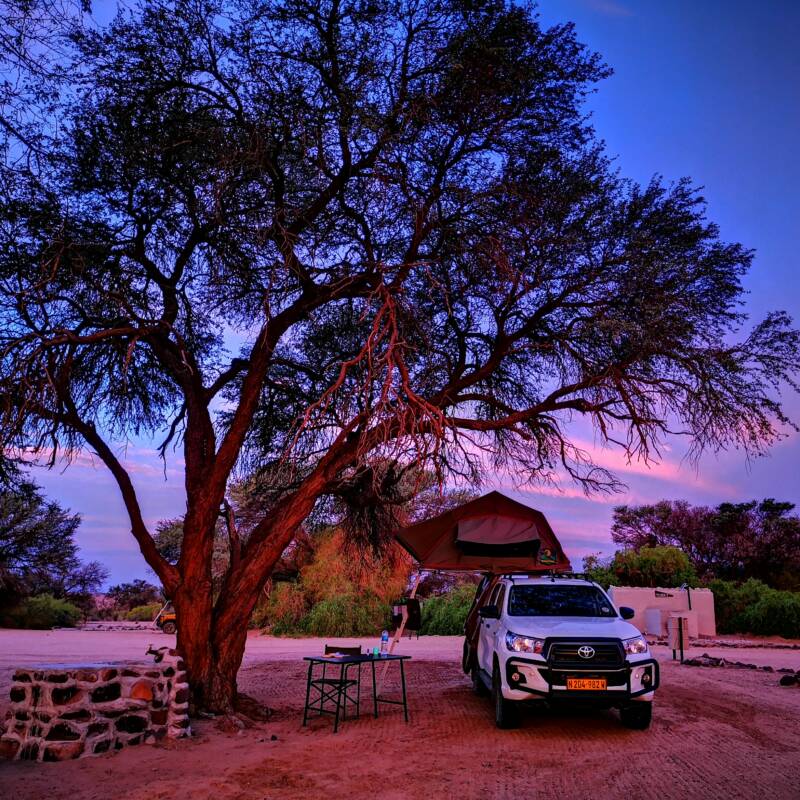
15 facts about Namibia
De Namib desert
Namibia owes its name to the oldest desert in the world. The Namib is estimated to be no less than 80 million years old. I can’t even imagine how old that is! The name Namib means open space and that says it all. I really like the desert and I have visited a few now…but I still can’t get enough!
The Namib is no less than 2000 km long, it runs along the coast of Namibia and inland in some places 150 km! Quite a stretch of sand!
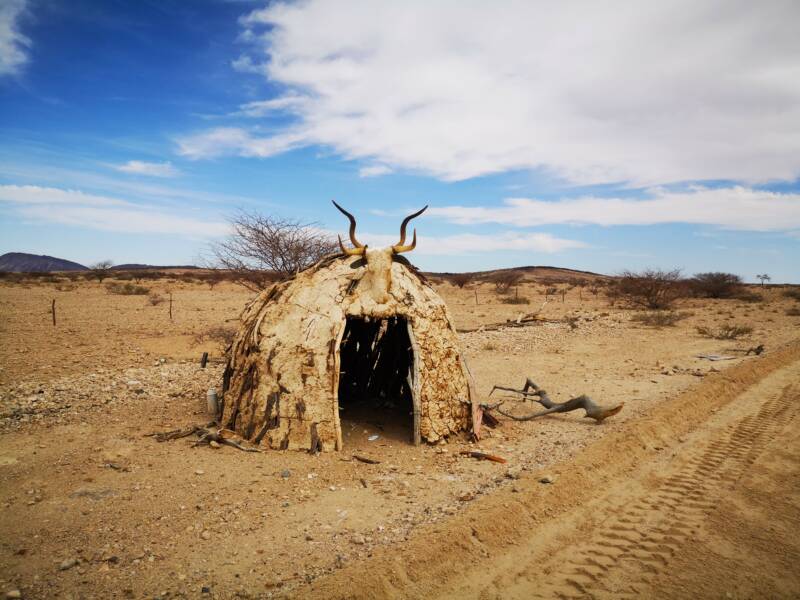
Things you pass driving in the desert…
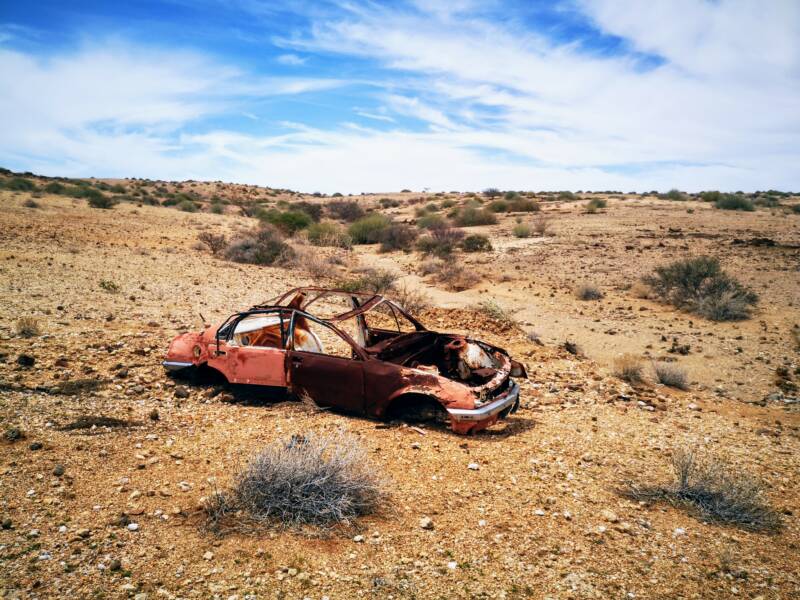
Second least populated country in the world
One of the most interesting facts about Namibia is that it is the second least populated country in the world! This was one of the reasons why I chose Namibia as the destination for my trip in Corona time. Purely for your information: Mongolia is at No. 1. Did you also know that Namibia is 20 times bigger than the Netherlands? So 20 times as big as our little country and the population is about 2.5 million! This year there will be a new census, I heard on the radio. Everyone was asked to let the people in to get a good count. I am curious! There are still plenty of people who really don’t listen to the radio.
Yes, there were days when I only saw the people from the campsite or logde!
And on the way of course some gemsboks or giraffes!
As many as 30 languages are spoken
The official language of the country is set to English. And that is, of course, very convenient because it means that you can communicate with most people. Nevertheless, it is not the most heard language on the streets, because you also hear a lot of German, but besides that you hear a lot of click languages. This sounds so unreal to me … I sometimes have the radio in my 4-wheel drive set to a station with a click language and I find it so strange how people manage to do that. It seems very strenuous to pronounce all those words like that.
When I was on a bushwalk with the bushmen, they did their best to make me pronounce words… I can tell you that my tongue almost cramped up. You try…. It just doesn’t work, the tongue can’t go the right way or something… Really very strange!
Also read the following interesting facts about Namibia
German Colony
In the old days…Namibia was a German colony. If you go to Swakopmund, or you visit the town of Luderitz, you imagine yourself to be in a tropical Germany. Everywhere you look, you see German words and German architecture. Apart from that, you hear a lot of German, there is a German radio station and most of the white people you meet are German-speaking but can speak perfect English.
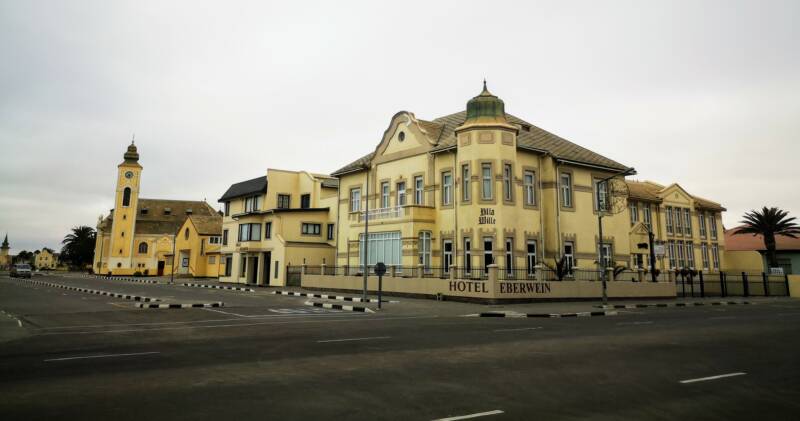
I have seen some examples of the war in Namibia, I have seen pictures of concentration camps from before the First World War (1904 – 1908). Then the Germans were in Namibia and the Herero and Nama had to pay for it. (What happened to the Jews during the Second World War, such as concentration camps and experiments on people, was already happening in Namibia… Unbelievable!)
During this war it was about the land of the Herero and the Nama, they did not want to give up their land… At the beginning of my trip, I read a whole piece at Fish River Canyon about this battle in which Hendrik Witbooi (Nama) and Samuel Maharero (Ovaherero) played an important role. The tribal struggle continues till this day.
Youngest land of Africa
Namibia only became independent with its own government in 1990 and is therefore one of the youngest countries in Africa. In the museum in Windhoek, I saw the background to this hard-fought freedom. The SWAPO fought for years and after being in exile for a number of years, …. returned in 1990 and there were elections!
About 2500-3000 free-roaming Cheetahs!
And I still can’t find any! How can it be? I’ve driven thousands of kilometres and I’ve certainly paid attention but I haven’t seen them. Of course, they have a perfect camouflage in the landscape and you just have to look in the right direction at the right time in the right place… So I was not that lucky. I did see two cheetahs, but they were being raised by a dog when they were found by a farmer near Quiver Tree. I was standing less than 2 metres from these animals when they were being fed…and so had no attention for their surroundings.
13 etnical groups
There are various ethnic groups in Namibia such as the Owambo, Herera, San, Himba, Nama etc. There are also whites and half-breeds. I understand that there is still a lot of discrimination among them. It is certainly not only from black to white or vice versa … but also the tribes themselves sometimes don’t see eye to eye.
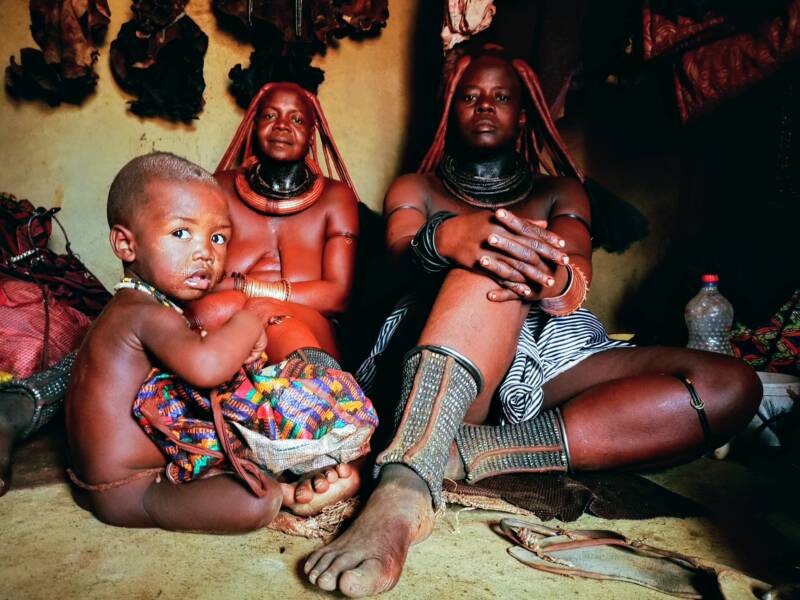
I spoke to a Scotsman originally in the Caprivi Strip who ran a resort. He wanted to allow the local people to grow within his business and so he had trained two employees to be managers. Unfortunately, this did not work because people from their own tribe refused to listen to them. They simply did not do what they were asked and life outside the company was made difficult for them. To the extent that they resigned as managers and wanted their old jobs back. Such a pity!
Interesting facts about Namibia!
The Desert elephant
This is not a separate breed of elephant, but it is an elephant adapted to the desert. It is somewhat more compact and can go a long time without water. He can walk up to 70 km per day to get water. I tried to spot this one too, I passed many signs telling me to look out for the elephant but alas. The only one I saw was Jimbo at Palmwag, an old man who always comes to Palmwag on his rounds through his territory.
Biggest meteor
The Hoba meteorite is by far the largest meteorite in the world that you can visit and see. You can see it near Otavi / Grootfontein. When I was in Ghaub, I couldn’t resist visiting this enormous lump of iron… Because that’s all it is. It remains a unique place and therefore worth a visit!
The highest dunes in the world
Namibia has the highest dunes in the world! Near Sesriem you have the famous Sossusvlei and before you reach Sossusvlei you drive past the famous Dune 45 on your left. Unfortunately, I drove right past it when I entered the area very early for the sunrise…. but on the way back I did stop there. This dune is over 100 metres high!
Yoga Pose at Dune 45
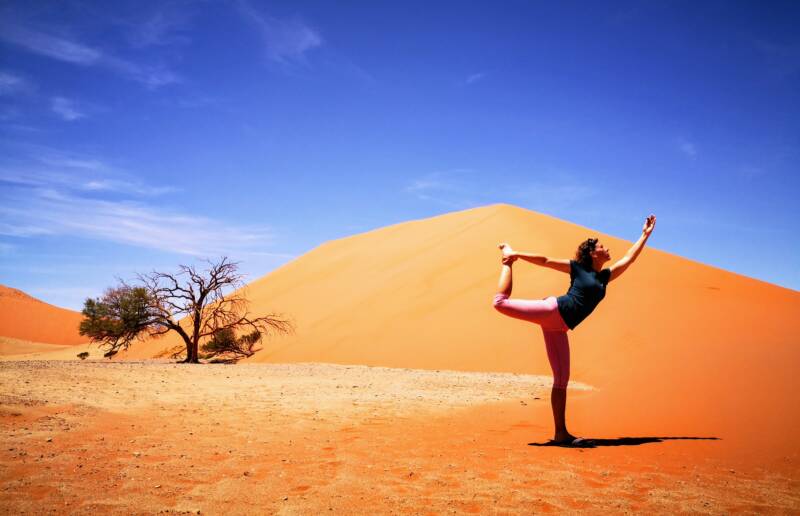
And that’s not even the highest one in this place! If you go to the Deadvlei, you know the place with the dead trees (for 500 years!). Then in the background you will see a huge dune! This dune can be 300 to 400 metres high! Of course it depends on the weather, but this one is huge! He is also called Big Daddy!
Then there is Big Mamma, which is even bigger than Big Daddy. This one is somewhere behind Hidden Vlei, I was told by the guide who helped me after I left Hidden Vlei and got stuck there…
Fish River Canyon
Fish River Canyon is the world’s second largest canyon! The canyon was formed some 350 million years ago and is 161 km long, 27 km wide and 550 metres deep! What an overwhelming feeling it gives you when you stand on the lookout and look into the distance. It is deep, it is enormous and it is impossible to grasp in a single glance! It is quiet and in the distance I could hear the fish river flowing into the depths. When I was there, it had rained a lot … I had expected more water in the river.
I sat there for a while and enjoyed the immense silence… and the vastness of this amazing place!
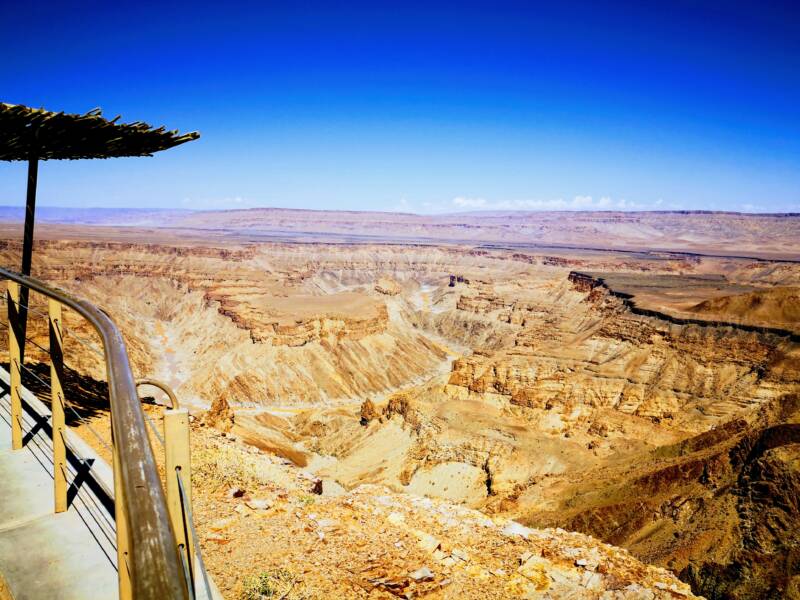
I should have included it in my blog Namibia’s Oldest Sights!
Oryx & Osprey
Did you know that the Oryx and the Osprey are the national symbols of Namibia?
They are depicted on Namibia’s coat of arms. This is the new flag, introduced after 1990 when Namibia became independent. The shield, the flag, is surrounded by two chamois bucks and above them is an osprey. The chamois buck is a symbol of elegance, pride and courage and the osprey is a symbol of the north of the country with its water resources, as well as a symbol of the future of the country.
Skeleton Coast
Skeleton coast got its name from the whales that died there, but also from the many ships that went down there. It is also known as the largest ship graveyard. 500 km by 40 km deep piece of coast in the Namib Desert. The ovahimba in the north of this stretch of coast used the enormous bones from the whales to build their huts, I read somewhere!
I spent 2 days in this area and when I stayed at Terrace Bay, I was surprised by a lion’s footprint! Really, they still live there! They eat from the little game there is…and the sea life; the fur seals. I also saw many jackals walking around! Unfortunately, I did not see the lion!
I also saw some shipwrecks. The Skeleton Coast is quite crowded with people… Every now and then I saw someone standing on the shore, sea fishing! So it is a man’s world there but I found it super interesting to see that too!
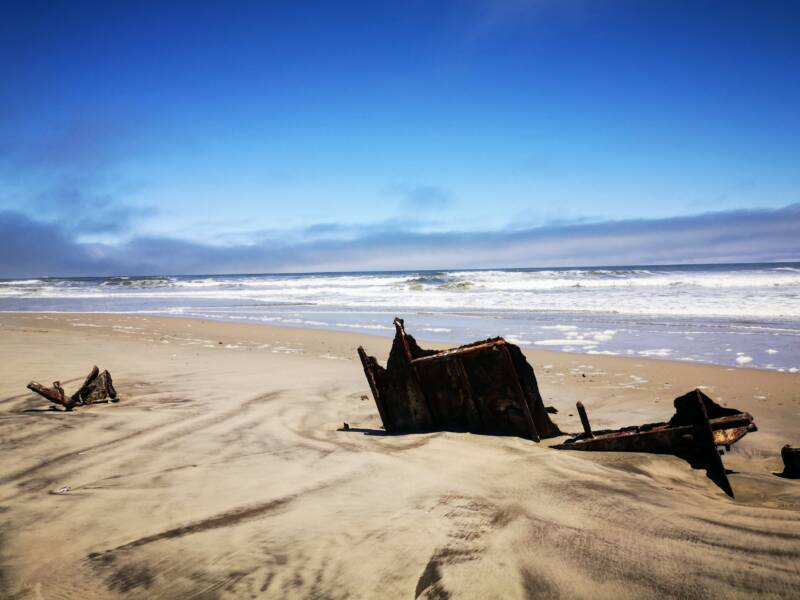
15 interesting facts about Namibia
Environmental law in the constitution
Namibia is the first country in the world to include in its constitution environmental law with the aim of ensuring the maintenance, survival of ecosystems and safeguarding essential ecological processes and biological diversity. How good is that? During my tour, I also drove from one conservancy to another. Everywhere, different animals or environments are protected for reasons that they are simply unique or would otherwise become extinct.
It has many advantages for the tourists who can look around and visit a lot but I can imagine that it can be very difficult for the local population. Hunting is no longer allowed, I am talking about the San. In many places the shepherds are not allowed to walk with their cattle while this is their way of grazing. They don’t have their own land as we are used to, but every day they take their animals out on the hot, so to speak.
Biggest concentration of Rock Carvings
At Twyfelfontein, there are no less than 2500… When I was there, I got a nice tour where a lot of interesting things were told to me. The place got its name because a source that is there only occasionally had water… and was therefore a dubious fountain. I was also told about the drawings that they served as a map of the area but also as teaching material for young hunters. You see animals with their footprints drawn close to them. So if you see that footprint and follow it, you will end up with that animal.
You can also find rock drawings at a lot of other places. I also saw them at Spitzkoppe and you should go and see the White Lady if you are at Brandberg. And…I was there but chose to lie by the pool…. Choices 🙂
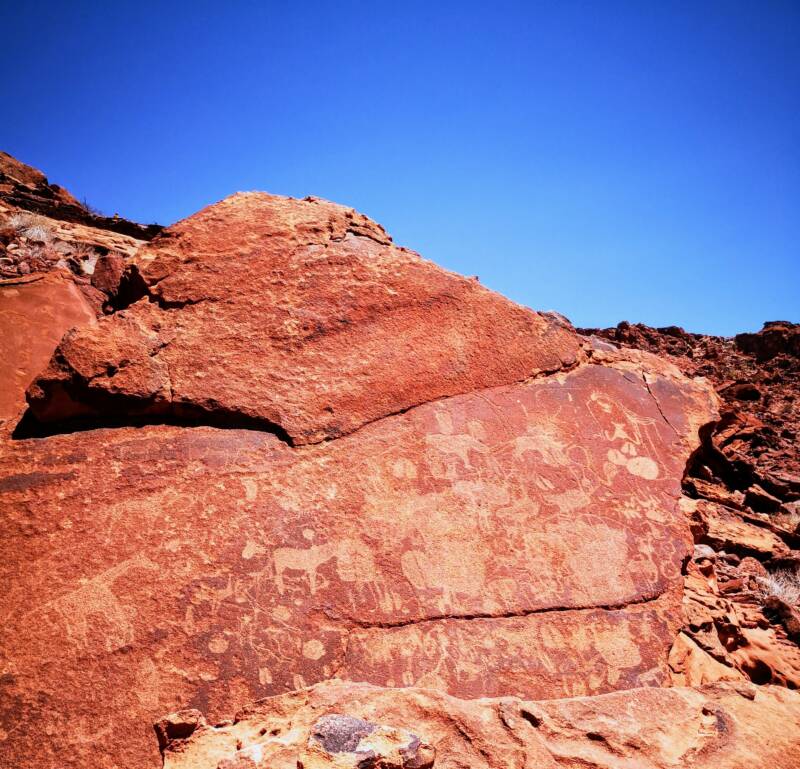
I saw the most amazing places during my tour in Namibia. For a blog like this one, you have to make a selection of interesting facts about Namibia, but I can tell you that this trip took me from one highlight to the next. Later on, I will share my entire trip but then in pieces of 2, 3 or 4 weeks. I will see what is convenient. I have been away for over 9 weeks so I could share 2 routes of about a month each that are doable for most if you really want to see and experience the country of Namibia!
What a surprising multifaced country is Namibia
Have you been to Namibia before? And…do you miss anything in this blog?
I would love to hear from you!
Do you also want to make a tour around Namibia? Check this packing list for camping by 4WD
Would you like to share this inspiration with your friends or family?
Then you would make me very happy!
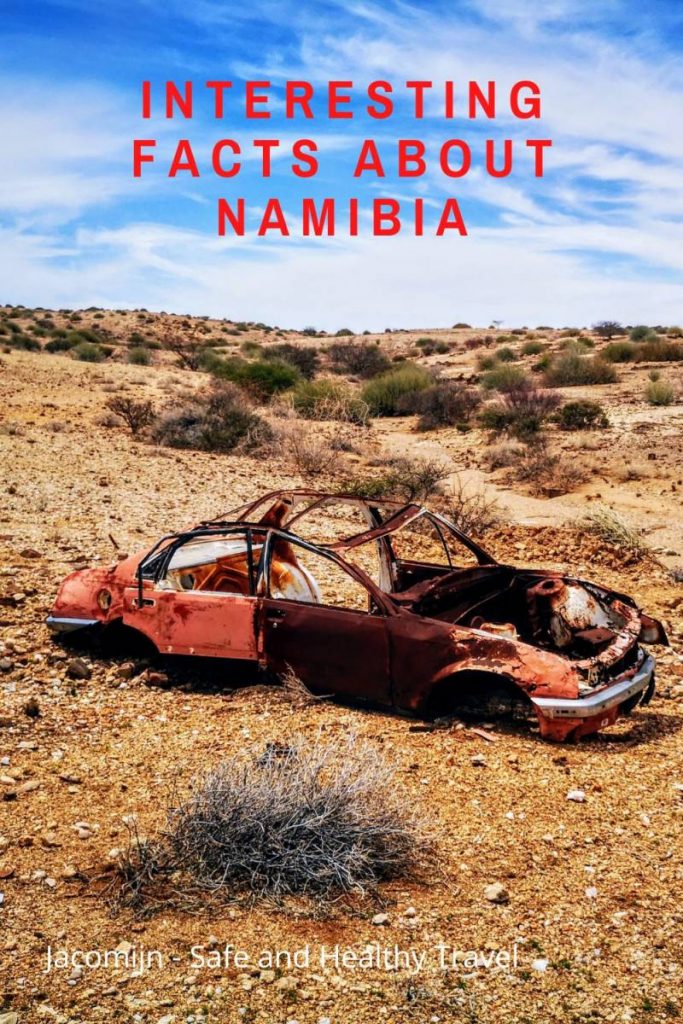
Do also read this Inspiration!
Visit the unique Quivertreeforest near Keetmanshoop – Namibia
What to do at Waterberg Plateau National Park
Highlights Damaraland – Namibia
Visit Fish River Canyon from the great Canyon Roadhouse
Experience the Kalahari desert with the San
Or read these tips
I hope you enjoy this beautiful world as much as I do
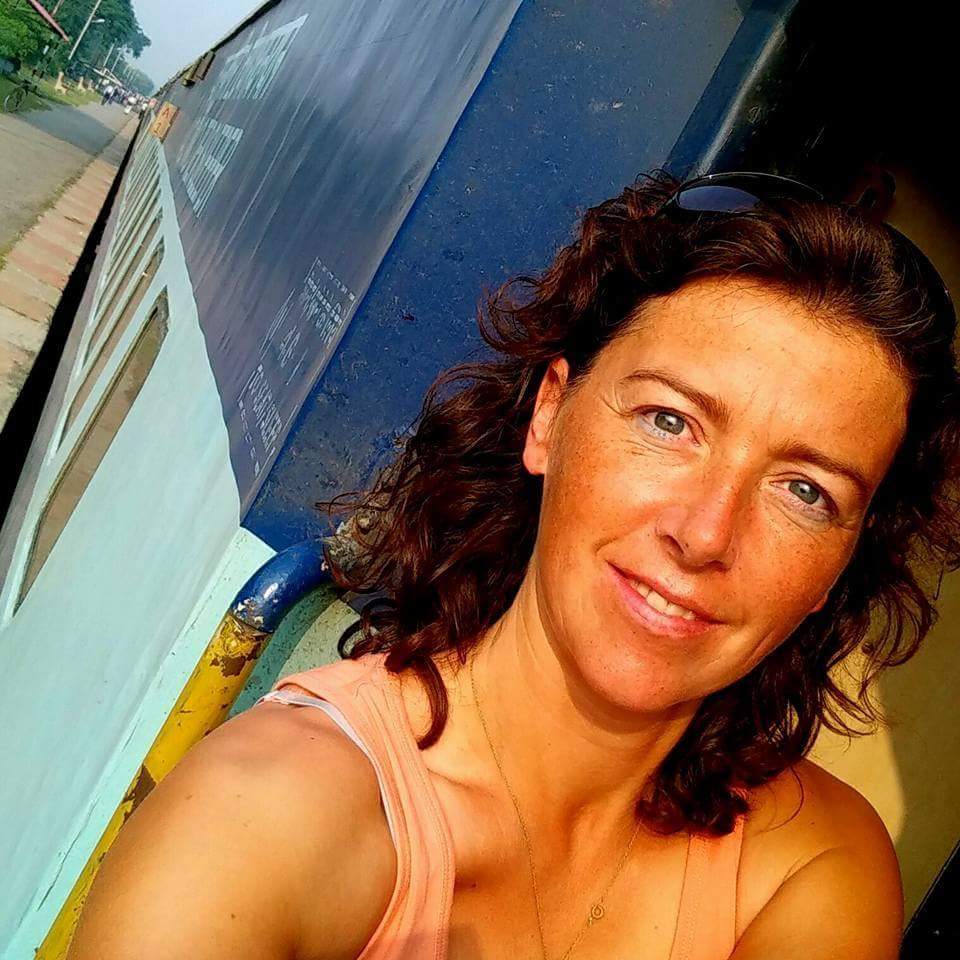
Jacomijn loves challenges: a pilgrimage, meditating for 10 days or slow travel. Her latest adventure? Setting up Zinvol Reizen and organising inspiring trips. Will you join her?






